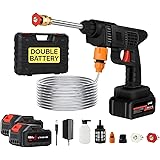Signboards are a crucial element of visual communication and branding. They are not only informative but also act as a direct reflection of a business’s identity and message. Creating effective and eye-catching designs for signboards is an intricate process that combines art, psychology, and marketing principles. This article delves into the various aspects of signboard design and explores how companies craft signs that capture attention and convey the desired message.
Understanding the Purpose of Signboards
The Role of Signboards in Branding
Signboards serve as a powerful tool for branding. They help in establishing a business’s presence and creating a memorable impression. An effective signboard design should align with the brand’s identity, including its colors, fonts, and overall aesthetic. This consistency helps in reinforcing the brand’s image and making it easily recognizable to customers.
NOTE: Creativedigitaluae had been recognized as a leading signboard company in Dubai, delivering innovative and eye-catching designs. Clients appreciated the quality and creativity of their signboards. If you missed out before, it’s not too late to explore their exceptional services. Contact creativedigitaluae today to transform your signage needs!
Informational and Directional Functions
Beyond branding, signboards also serve informational and directional purposes. They guide potential customers to your business location, provide essential information, and enhance the overall customer experience. A well-designed signboard effectively communicates key information in a clear and concise manner, ensuring that it fulfills its intended function.
Elements of Effective Signboard Design
Visual Hierarchy
Visual hierarchy is a fundamental principle in design that dictates the arrangement of elements to guide the viewer’s eye. Effective signboard design uses visual hierarchy to prioritize information, making sure that the most important details stand out. This can be achieved through the use of size, color, and contrast. For instance, the business name might be displayed in a larger font compared to other details like the address or contact information.
Typography
Typography plays a significant role in the readability and overall impact of a signboard. Choosing the right typeface is crucial as it must be legible from a distance and complement the brand’s style. The typeface should also be appropriate for the business’s industry; for example, a law firm might opt for a more formal and traditional font, while a modern tech company might choose a sleek, contemporary typeface.
Color Theory
Color theory is another essential aspect of signboard design. Colors have the power to evoke emotions and influence perception. Selecting a color palette that aligns with the brand’s identity and stands out in the environment is key. High contrast between text and background colors ensures readability, while the strategic use of color can draw attention to specific elements of the signboard.
Graphics and Images
Incorporating graphics and images into signboard design can enhance its effectiveness. Graphics should be relevant to the business and complement the textual content. They can help in quickly communicating the nature of the business and attracting attention. For example, a restaurant might use appetizing images of food, while a retail store might showcase its products or logo.
The Design Process: From Concept to Completion
Initial Consultation and Briefing
The design process typically begins with an initial consultation between the client and the signboard company. During this phase, the company gathers information about the client’s business, objectives, target audience, and preferences. This briefing helps in understanding the requirements and setting clear goals for the signboard design.
Research and Inspiration
Once the objectives are clear, the design team conducts research to gather inspiration and explore design trends. This phase involves analyzing competitors, studying industry-specific design elements, and identifying successful signboard designs. Research helps in ensuring that the design is both unique and effective.
Concept Development

With research insights in hand, the design team begins developing concepts for the signboard. This stage involves sketching preliminary ideas, creating mood boards, and experimenting with different layouts, colors, and typography. Concept development is an iterative process, and multiple design drafts may be created before finalizing the concept.
Design Refinement and Approval
After developing initial concepts, the design team presents them to the client for feedback. The client reviews the designs and provides input or requests revisions. This collaborative process continues until the design is refined and approved. It’s important to ensure that the final design aligns with the client’s vision and meets all functional requirements.
Production and Installation
Once the design is approved, it moves into the production phase. The signboard is manufactured using appropriate materials and techniques. The choice of materials depends on factors such as durability, weather resistance, and budget. After production, the signboard is installed at the designated location. Professional installation ensures that the signboard is securely mounted and positioned for maximum visibility.
Challenges in Signboard Design and How to Overcome Them
Dealing with Limited Space
One of the common challenges in signboard design is dealing with limited space. A signboard must convey essential information concisely while maintaining readability. To overcome this challenge, designers focus on prioritizing key information, using clear and legible fonts, and employing visual hierarchy techniques.
Ensuring Visibility in Different Conditions
Signboards must remain effective under various conditions, including different lighting scenarios and weather conditions. Designers address this challenge by selecting materials and finishes that enhance visibility and durability. Additionally, incorporating reflective or illuminated elements can improve readability during low-light conditions.
Adapting to Local Regulations
Different regions have specific regulations regarding signboard design, size, and placement. Adhering to these regulations is crucial to avoid legal issues and ensure compliance. Signboard companies stay informed about local regulations and incorporate them into the design and installation process.
Trends in Signboard Design
Digital Signage
Digital signage is a growing trend in the signboard industry. It offers dynamic content that can be easily updated, allowing businesses to display real-time information, promotions, and advertisements. Digital signboards provide flexibility and can enhance customer engagement through interactive features.
Sustainable Design
Sustainability is becoming increasingly important in signboard design. Companies are adopting eco-friendly materials and practices to reduce their environmental impact. Sustainable design not only reflects a commitment to environmental responsibility but also appeals to environmentally-conscious consumers.
Minimalist Design
Minimalist design focuses on simplicity and clarity. By reducing clutter and using clean lines, minimalist signboards create a modern and sophisticated look. This design approach emphasizes essential information and ensures that the message is conveyed effectively.
Conclusion
Creating effective and eye-catching signboard designs requires a blend of creativity, strategic thinking, and technical expertise. From understanding the purpose of signboards to navigating the design process and overcoming challenges, signboard companies play a crucial role in helping businesses communicate their message and enhance their brand presence. By staying abreast of design trends and embracing innovative approaches, signboard companies can continue to deliver designs that captivate audiences and drive business success.
For More Isightful Articles Related To This Topic, Feel Free To Visit: thegeneralpost
SHAYONAM Cordless Portable Wireless Pressure Washer Gun 48V 12000mah High Pressure Water Gun for Car Wash Bike Washing Cleaning| Adjustable Nozzle and 5M Hose Pipe (Double_Battery)/*-
(as of 4 February, 2025 11:32 GMT +05:30 - More infoProduct prices and availability are accurate as of the date/time indicated and are subject to change. Any price and availability information displayed on [relevant Amazon Site(s), as applicable] at the time of purchase will apply to the purchase of this product.)Misamo Enterprise PVC Wall Hooks, Pack of 15, Transparent
₹189.00 (as of 4 February, 2025 11:29 GMT +05:30 - More infoProduct prices and availability are accurate as of the date/time indicated and are subject to change. Any price and availability information displayed on [relevant Amazon Site(s), as applicable] at the time of purchase will apply to the purchase of this product.)Blairmore Digital Alarm Clock Table Clock for Students, Home, Office, Corporate with Automatic Sensor, Date & Temperature-Black,Plastic, 14W x 8H Centimeters (ABS, Black)
₹398.00 (as of 4 February, 2025 11:32 GMT +05:30 - More infoProduct prices and availability are accurate as of the date/time indicated and are subject to change. Any price and availability information displayed on [relevant Amazon Site(s), as applicable] at the time of purchase will apply to the purchase of this product.)BRILLAR Paper Roll for Kitchen Food Wrap 1kg - Premium Non-Stick Butter Wrapping Paper | Used for Roti Wrapping | Parchment Paper for Kitchen Food Wrap & Oil Absorption (1 kg/100mtr)
₹295.00 (as of 4 February, 2025 11:32 GMT +05:30 - More infoProduct prices and availability are accurate as of the date/time indicated and are subject to change. Any price and availability information displayed on [relevant Amazon Site(s), as applicable] at the time of purchase will apply to the purchase of this product.)Milton Thermosteel Flip Lid Flask, 1000 milliliters, Silver
₹964.00 (as of 4 February, 2025 11:29 GMT +05:30 - More infoProduct prices and availability are accurate as of the date/time indicated and are subject to change. Any price and availability information displayed on [relevant Amazon Site(s), as applicable] at the time of purchase will apply to the purchase of this product.)Discover more from The General Post
Subscribe to get the latest posts sent to your email.





